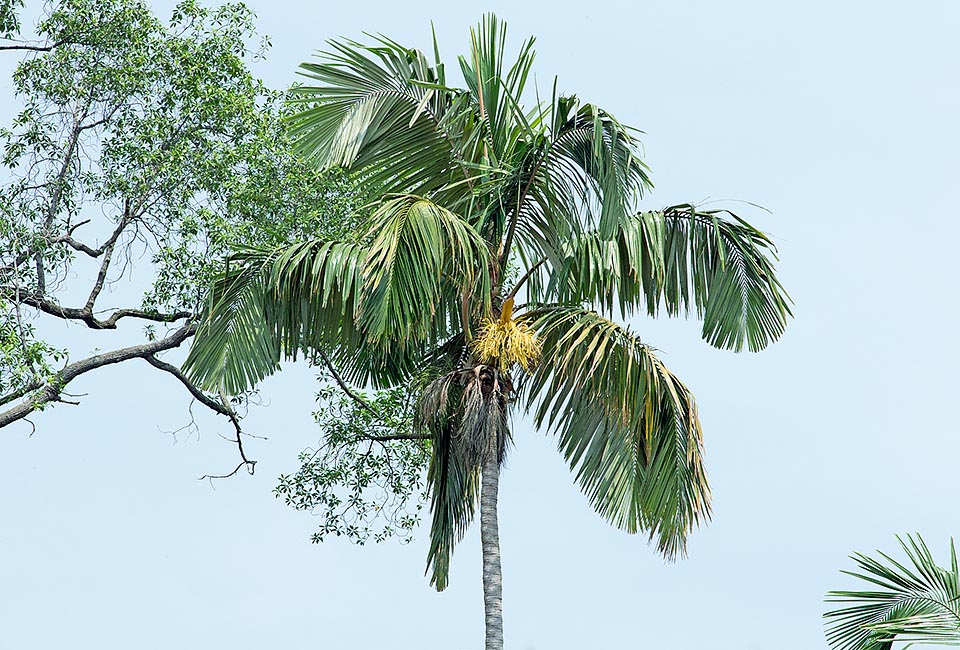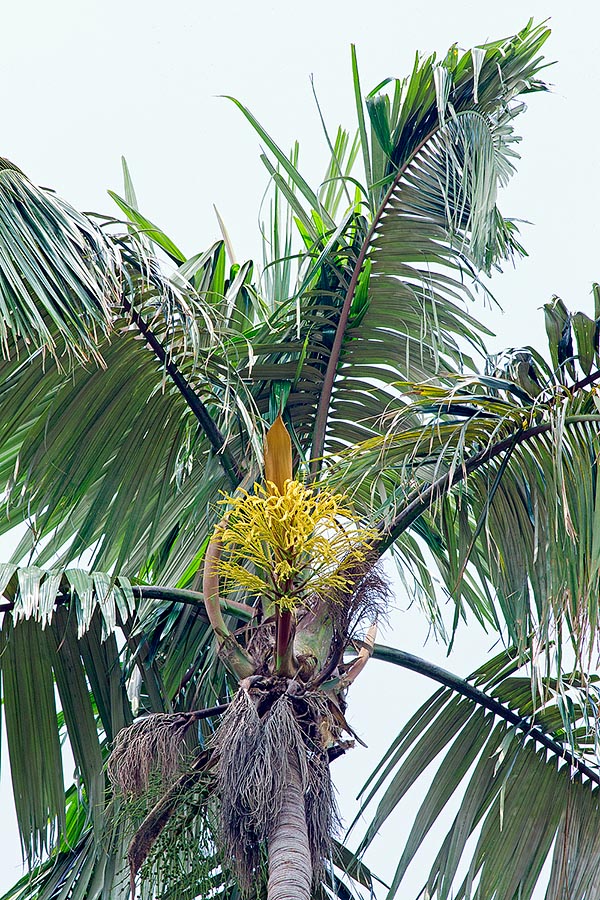Family : Arecaceae

Text © Pietro Puccio

English translation by Mario Beltramini

Originating from the humid forests of Southeast Asia, where leaves and stems are used in the rural homes, the Orania sylvicola reaches 20 m in height © Giuseppe Mazza
The genus was honoured to the Prince Willem van Oranje Nassau (1792-1849), then Willem II, king of the Netherlands; the name of the species is the Latin substantive “sylvicola, ae” = woodsman, with obvious reference.
Common names: ibul palm (English); iwul (Java); ibul, kayu baluhur (Malaysia); kapun, pon (Thailand).

Little demanding in terms of soil, it's a very decorative species for tropical gardens © Giuseppe Mazza
The foliar base, 60-80 cm long, with fibrous margins and covered by a brown red tomentum externally, wraps only partially the stem of the outer leaves. The inflorescences, on a 30-80 cm long peduncle, generate among the leaves (interfoliar), 0,8-1 m long, with numerous rachillae, 25-40 cm long, bearing unisexual flowers united in groups of three (a female flower between two male ones).
Globose fruits, of 3,5-4,5 cm of diameter, initially green, then yellowish green when ripe, containing only one globose seed of 3-4 cm of diameter; the fruits are highly poisonous.
It propagates by seed, previously kept in water for two days, in at least 20 cm tall containers, seen that the hypocotyl goes much deep, with draining loam rich of humus maintained humid at the temperature of 26-30 °C, with germination times of 1 to 3 months.
Palm of undoubtful ornamental characteristics, utilizable in parks and gardens as isolated specimen, in group or at the margins of alleys, exclusively in the tropical and humid subtropical climate regions, not standing temperatures close to the 0 °C, even if short lasting. It requires an exposition in full sun when adult, partially shady during the first years of growth, and is not particular about the soil, provided the same is draining and maintained almost constantly humid.
The stems are used in the constructions and the leaves as coverage of rural dwellings.
Synonyms: Macrocladus sylvicola Griff (1845); Orania macrocladus Mart. (1845).
→ For general notions about ARECACEAE please click here.
